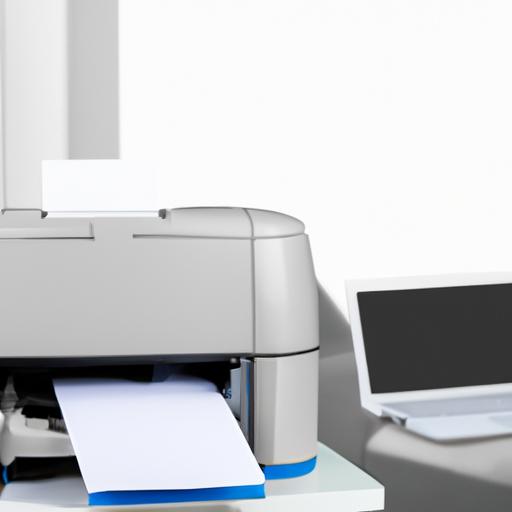What are the Dimensions of Printer Paper?
Table of Contents
Are you tired of experiencing printing errors and paper jams because you are using the wrong paper size? Do you want to improve your printing quality and efficiency? If so, it is essential to understand the dimensions of printer paper. In this article, we will explore the different sizes of printer paper, their dimensions, and how to choose the right size for your project.
Standard Printer Paper Sizes

The most common paper sizes used for printing are A4, letter, and legal. A4 paper is the standard size used globally, while letter and legal are commonly used in North America. A4 paper measures 210mm by 297mm, while letter paper is 8.5 inches by 11 inches, and legal paper is 8.5 inches by 14 inches.
Other standard paper sizes include A3, ledger/tabloid, and executive. A3 paper is twice the size of A4 paper, measuring 297mm by 420mm. Ledger/tabloid paper is 11 inches by 17 inches, and executive paper is 7.25 inches by 10.5 inches.
It is essential to note that paper sizes vary across different countries. For instance, the standard paper size in Japan is B5, measuring 182mm by 257mm. In contrast, the standard paper size in Mexico and the Dominican Republic is Folio, which is 8.27 inches by 13 inches.
Understanding the standard paper sizes is crucial when printing documents for international clients or working with colleagues from different regions.
Other Printer Paper Sizes
Apart from the standard sizes, there are other paper sizes commonly used in specific industries or regions. For instance, architects and engineers use ANSI paper sizes, which include ANSI A, B, C, D, and E. ANSI A paper measures 8.5 inches by 11 inches, while ANSI E paper measures 34 inches by 44 inches.
In the photography industry, there are several paper sizes used to print photos. Some of the common sizes include 4×6, 5×7, and 8×10. These sizes are designed to fit standard photo frames and albums.
Moreover, there are also paper sizes used in the printing of books. The most common book sizes include A-format, B-format, and C-format. A-format measures 110mm by 178mm, while B-format measures 129mm by 198mm. C-format measures 135mm by 216mm and is commonly used for trade paperbacks.
Specialty Printer Paper
Specialty printer paper refers to non-traditional paper types and sizes used for specific purposes. Some examples of specialty paper include cardstock, glossy paper, and photo paper. Cardstock is a heavy and durable paper commonly used for business cards, postcards, and invitations. Glossy paper is a type of paper that has a shiny coating, making it ideal for printing photographs.
Additionally, there are also specialty papers used for specific printing techniques such as screen printing and letterpress printing. These papers have unique textures and thicknesses that enhance the printing results.
The dimensions of specialty paper vary depending on their intended use. For instance, photo paper comes in various sizes, including 4×6, 5×7, and 8×10. Cardstock, on the other hand, comes in various thicknesses, with the most common being 65lb, 80lb, and 110lb.
When choosing specialty paper, it is essential to consider the intended use, printing technique, and printer compatibility. Using the wrong paper size or type can result in poor printing quality and damage to the printer.
Choosing the Right Paper Size
When selecting the appropriate paper size for a specific project, several factors need to be considered. Firstly, consider the purpose of the document. Is it a formal document that requires a professional appearance, or is it an informal document that does not require a high-quality appearance? Secondly, consider the amount of content to be printed. Will it fit adequately on a standard size paper, or will it require a larger or smaller size? Thirdly, consider the printer’s capabilities. Can the printer handle larger or smaller paper sizes, or is it limited to standard sizes only?
Here are some tips for selecting the right paper size to improve printing quality and efficiency:
-
Always choose the appropriate paper size for the purpose of the document. Formal documents require a professional appearance, while informal documents do not.
-
Consider the amount of content to be printed. If the content is extensive, consider using a larger paper size to avoid overcrowded pages.
-
Check the printer’s capabilities before selecting a paper size. Some printers can handle larger or smaller paper sizes, while others are limited to standard sizes only.
-
Use the appropriate paper size to avoid printing errors and paper jams.
Conclusion
In conclusion, understanding the dimensions of printer paper is essential in improving your printing quality and efficiency. Knowing the different paper sizes and their dimensions can help you avoid printing errors and paper jams. When choosing the appropriate paper size for a specific project, consider the purpose of the document, the amount of content to be printed, and the printer’s capabilities. By following these tips, you can select the right paper size and improve your printing quality and efficiency.

